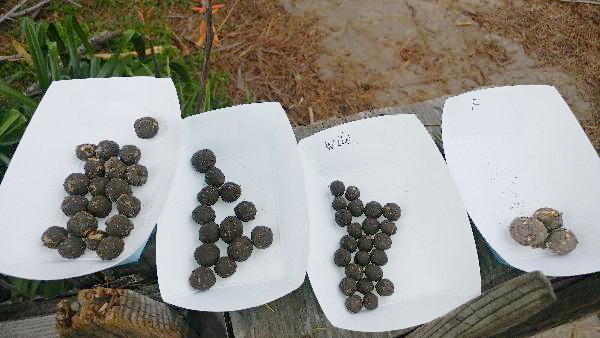Enhancing Nature’s Cover Crop
Fields and Hillsides for Pollinators
Fields and Hillsides for Pollinators
Any disused field or space will, after some seasonal winter rain in Southern California, burst forth with verdant spontaneity. We tend to call them weeds, these waves of opportunistic plants successively taking over, one species after another, until the parched months of summer reduce practically all to quiescent aestivation. Often dominated by storksbill, grass and mustard, California open spaces can delight in other far more refulgent natural species which serve the eye and the insects even more dramatically. A few native wildflower seeds can make a wonderful difference.
Unlike those packs requiring care
These seeds are welcome anywhere.
A rainy day or two and then
They bloom one year, and seed again.

Native Wildflower Seedballs
Each is content to blossom here
And bloom in turn its time of year.
Our spate of solely winter rain
Serves each to live and give again.
Some field that served no butterflies
Springs into color, seeds and dies
A plot to no good purpose put
Which felt no friendly hand nor foot
Receives a clod of earth and clay
Behold! A garden underway!
– Anonymous
Scientifically designed mixtures of seed and growing media such as Altadena Maid Wildflower Seedbark are clearly the ideal and guaranteed method of planting native wildflower seeds but there are many schools for alternative seeding methods, the one at Wildlifetrusts.org being a very standard approach which could be used to produce projectiles with greater range. Importantly, the formulation of the seed ball should be accomplished using as little moisture as possible to avoid premature seed germination. Also, the number of seeds should be no more than can reasonably grow in close proximity. The formula calls for clay but the quantity should be kept to a minimum as clay balls can resist breaking down. Clay based cat litter actually works better than the clay powder recommended in that recipe.
Long distance seed disbursal can be accomplished with seedballs and a slingshot and can be ever so satisfying and rewarding, even when thoroughly unnecessary. In certain types of terrain, seed-impregnated decomposable paper airplanes can achieve impressive distances and add interesting improbability factors. Seeds mixed into suet cake bird food blocks may well be disseminated through avian scatological droppings, a process of orchestrated endozoochory, but there is very little documentation on this tactic to rely upon.
It must be noted that the introduction of seeds to soil can be fraught with untoward consequences, particularly if invasive and non-native species are permitted to encroach. Native species, however, are a different story and serve only to preserve and perpetuate natural biodiversity. If you have a field, it’s almost a crime not to support benign biodiversity.
